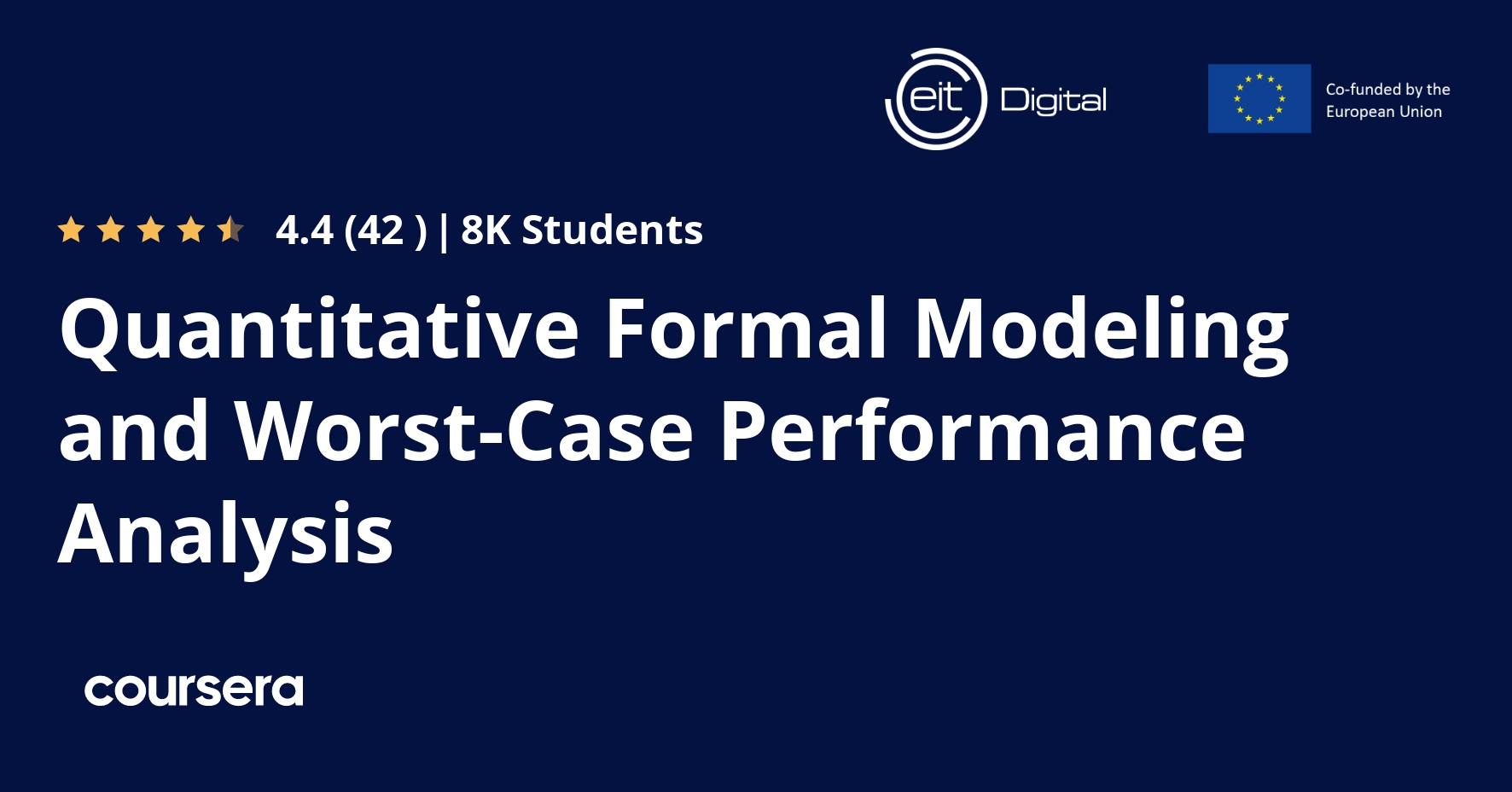Description
Welcome to Quantitative Formal Modeling and Worst-Case Performance Analysis. In this course, you will learn about modeling and solving performance problems in a fashion popular in theoretical computer science, and generally train your abstract thinking skills.
After finishing this course, you have learned to think about the behavior of systems in terms of token production and consumption, and you are able to formalize this thinking mathematically in terms of prefix orders and counting functions. You have learned about Petri-nets, about timing, and about scheduling of token consumption/production systems, and for the special class of Petri-nets known as single-rate dataflow graphs, you will know how to perform a worst-case analysis of basic performance metrics, like throughput, latency and buffering.
Disclaimer: As you will notice, there is an abundance of small examples in this course, but at first sight there are not many industrial size systems being discussed. The reason for this is two-fold. Firstly, it is not my intention to teach you performance analysis skills up to the level of what you will need in industry. Rather, I would like to teach you to think about modeling and performance analysis in general and abstract terms, because that is what you will need to do whenever you encounter any performance analysis problem in the future. After all, abstract thinking is the most revered skill required for any academic-level job in any engineering discipline, and if you are able to phrase your problems mathematically, it will become easier for you to spot mistakes, to communicate your ideas with others, and you have already made a big step towards actually solving the problem. Secondly, although dataflow techniques are applicable and being used in industry, the subclass of single-rate dataflow is too restrictive to be of practical use in large modeling examples. The analysis principles of other dataflow techniques, however, are all based on single-rate dataflow. So this course is a good primer for any more advanced course on the topic.
This course is part of the university course on Quantitative Evaluation of Embedded Systems (QEES) as given in the Embedded Systems master curriculum of the EIT-Digital university, and of the Dutch 3TU consortium consisting of TU/e (Eindhoven), TUD (Delft) and UT (Twente). The course material is exactly the same as the first three weeks of QEES, but the examination of QEES is at a slightly higher level of difficulty, which cannot (yet) be obtained in an online course.





